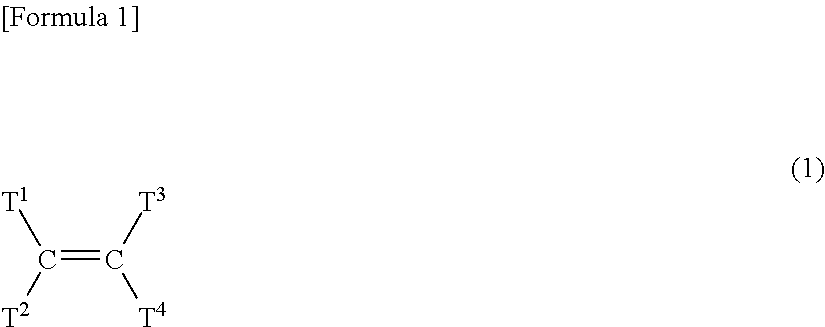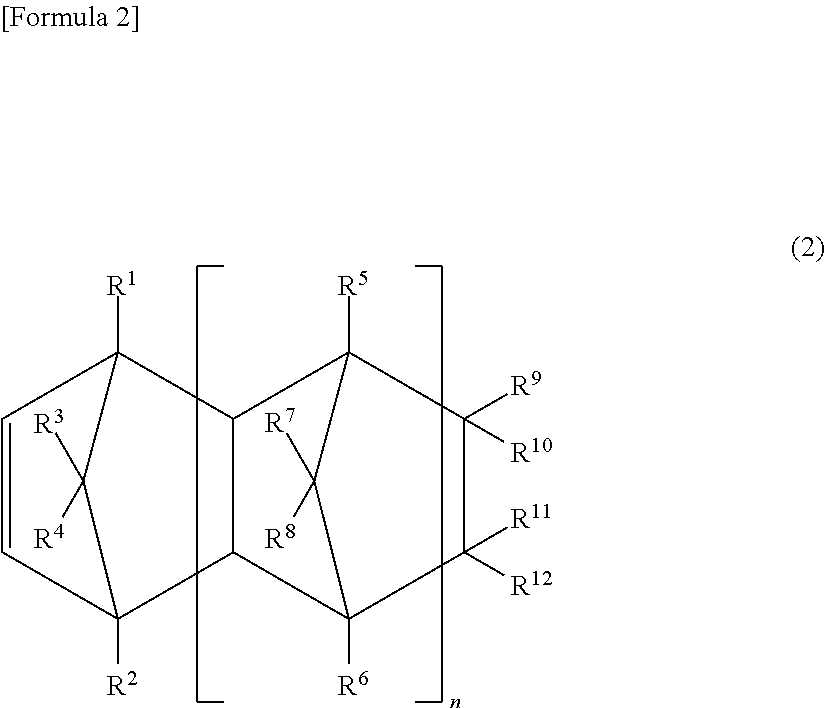Polymer composition for lamination and laminated body using same
a technology of polymer composition and lamination body, applied in the field of polymer composition, can solve the problems of insufficient strength, low heat sealing strength, and inability to increase the packing speed, and achieve excellent heat sealing properties, good hot tack properties, and excellent heat sealing properties
- Summary
- Abstract
- Description
- Claims
- Application Information
AI Technical Summary
Benefits of technology
Problems solved by technology
Method used
Image
Examples
example
(2) of Molecular Structure
[0121]Also, it is possible to confirm random copolymerizability of the copolymer by various methods, a method of judging random copolymerizability from the relationship between the comonomer content and the melting point of the copolymer is described in detail in JP 2015-163691A and JP 2016-079408A. From the above-mentioned documents, it can be judged that randomness is low when the inciting point (Tire, ° C.) of the copolymer is higher than −3.74×[Z]+130 (provided that [Z] is a comonomer content / mol %).
[0122]In the copolymer according to the present invention, it is preferred that the melting point (TM, ° C.) observed by the differential scanning calorimetry measurement (DSC) and the total content [Z] (mol %) of the structural unit (B) of the monomer having a carboxyl group and / or a dicarboxylic anhydride group and the st aural unit (C) of the optional monomer satisfy the following formula (I).
50
[0123]When the melting point (Tera, ° C...
example 1
[0311](1) Synthesis of B-27DM / Ni complex
[0312]As the 13-27DM / Ni complex, in accordance with Synthetic Example 4 described in WO 2010 / 050256, the following 2-bis(2,6-dimethoxyphenyl)phosphano-6-pentafluorophenylphenol ligand (B-27DM) was used. In accordance with Example 1 of WO 2010 / 050256, a nickel complex (B-27DM / Ni) in which B-27DM and Ni(COD)2 are reacted with 1:1 was synthesized using bis(1,5-cyclooctadiene)nickel(0) (which is referred to as Ni(COD)2).
(Production Example 1): Production of Ionomer Base Resin Precursor
[0313]An ethylene / tBu acrylate / norbornene copolymer was produced using a transition metal complex (B-27DM / Ni complex or 13423 / Ni complex). With reference to Production Example 1 or Production Example 3 described in JP 2016-79408A, production of the copolymer was carried out, and optionally changed production conditions and results of production such as a kind of a metal catalyst, an amount of the metal catalyst, an amount of trioctyl aluminum (TWA), an amount of tolu...
example 2
[0324]After uniformly mixing 70% by weight of the ionomer 1 and 30% by weight of an LIRE resin (MFR=5, density=0.918 g / cm3 and Mw / Mn=11) polymerized by the autoclave high-pressure method by a mixer for about 30 seconds, kneading was carried out using a 30 mmϕ single-screw kneading extruder at 170° C. to obtain pellets of a polymer composition 1. MFR of the obtained polymer composition 1 was 6.0 g / 10 min.
[0325]In the same manner as in Example 1 except for using the obtained polymer composition 1 in place of the ionomer 1, extrusion lamination molding was carried out with a thickness of 25 μm to obtain a laminated body. Extrusion lamination processing conditions, and aluminum adhesive strength and hot tack strength of the obtained laminated body are shown in Table 9.
PUM
| Property | Measurement | Unit |
|---|---|---|
| phase angle | aaaaa | aaaaa |
| mol % | aaaaa | aaaaa |
| melt flow rate | aaaaa | aaaaa |
Abstract
Description
Claims
Application Information
 Login to View More
Login to View More - R&D
- Intellectual Property
- Life Sciences
- Materials
- Tech Scout
- Unparalleled Data Quality
- Higher Quality Content
- 60% Fewer Hallucinations
Browse by: Latest US Patents, China's latest patents, Technical Efficacy Thesaurus, Application Domain, Technology Topic, Popular Technical Reports.
© 2025 PatSnap. All rights reserved.Legal|Privacy policy|Modern Slavery Act Transparency Statement|Sitemap|About US| Contact US: help@patsnap.com



